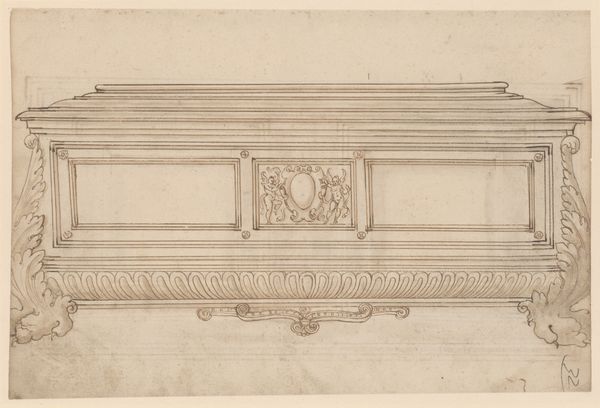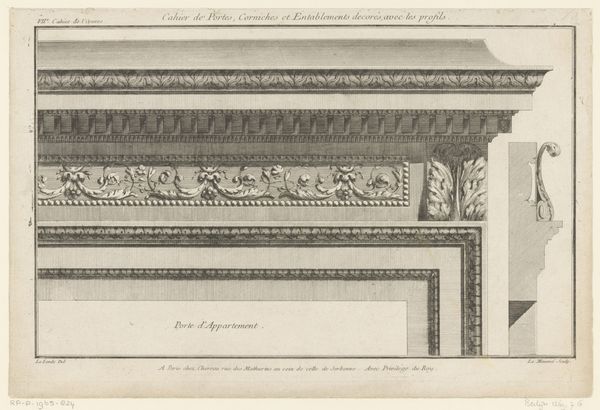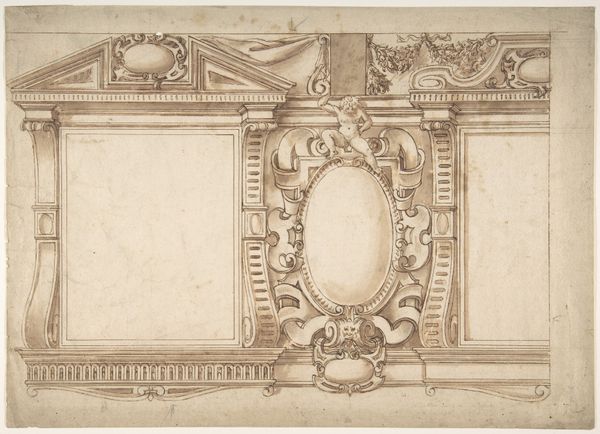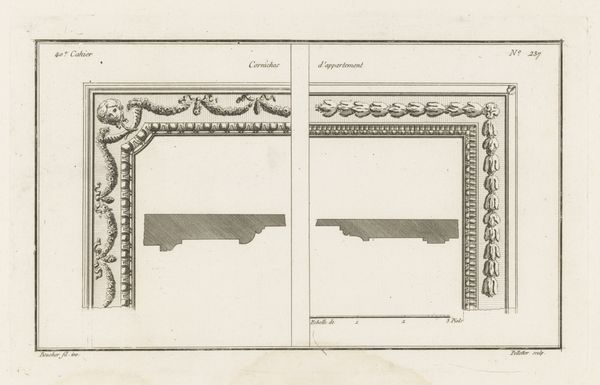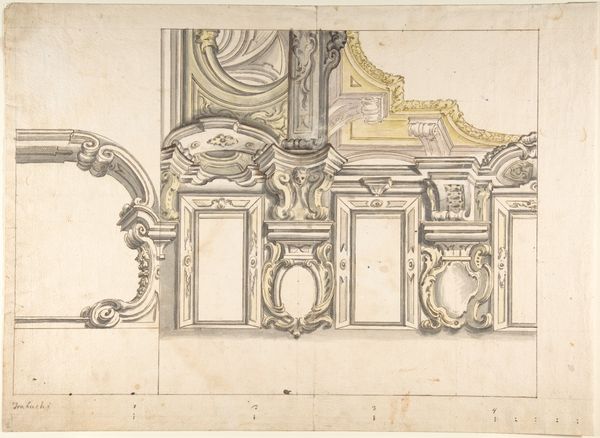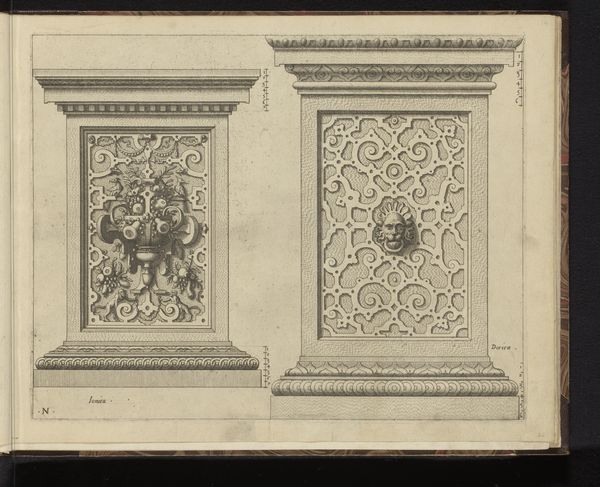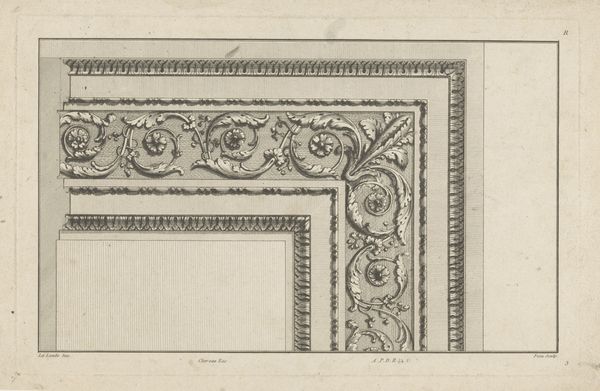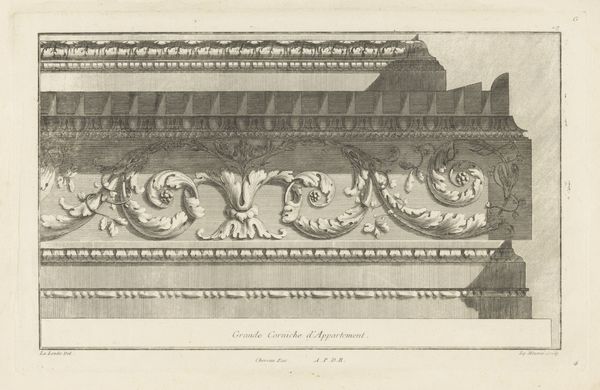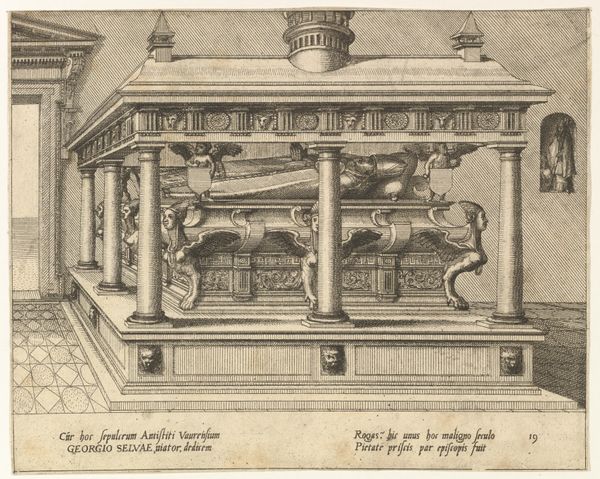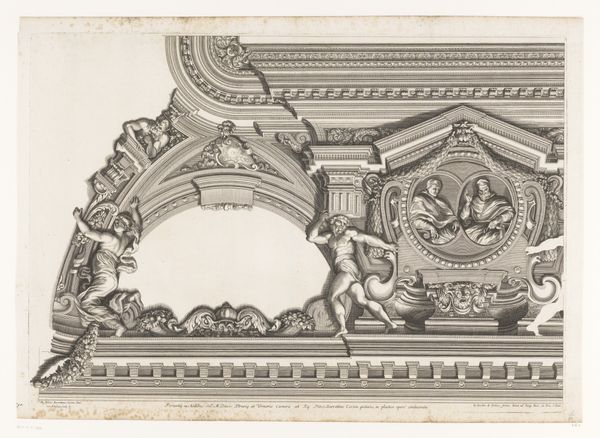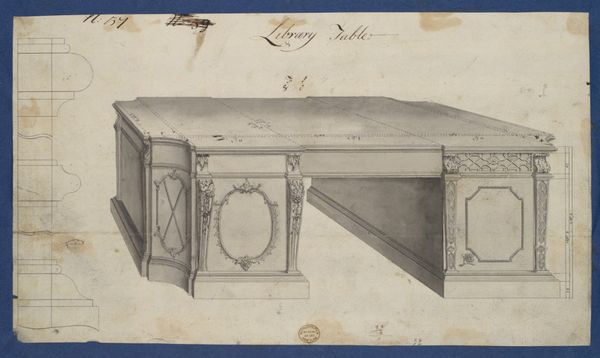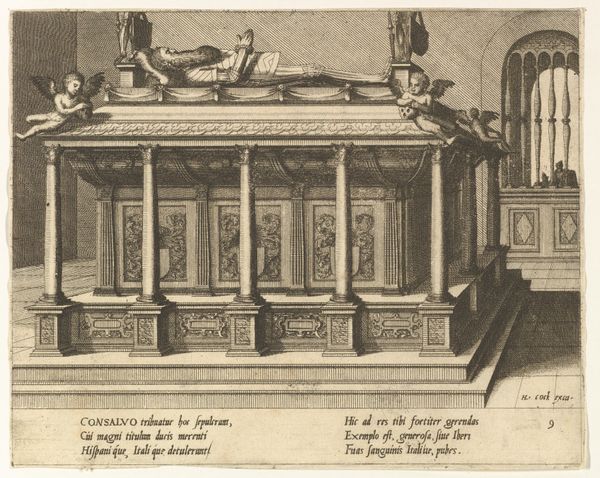
Speculum Romanae Magnificentiae: Corinthian entablature 1532 - 1538
0:00
0:00
drawing, print, engraving, architecture
#
drawing
# print
#
old engraving style
#
perspective
#
form
#
geometric
#
line
#
italian-renaissance
#
engraving
#
architecture
Dimensions: sheet: 5 7/8 x 6 7/8 in. (15 x 17.5 cm) mount: 7 7/8 x 8 1/4 in. (20 x 21 cm)
Copyright: Public Domain
This print of a Corinthian entablature was made in the mid-16th century by Monogrammist G.A. & the Caltrop, using etching. What’s remarkable about this image is the way it dissects classical architecture, rendering the stone block as an accumulation of intricate, modular components. Etching was often used to reproduce paintings, but here the technique is applied to architecture with a scientific rigor, almost like a blueprint. Consider how this print relates to the actual labor of quarrying, transporting, and carving stone. The process of architectural production involved many hands, each contributing specialized knowledge to the whole. This print reflects a conceptual understanding of architecture, breaking it down into measured, repeatable units. We see a shift from the direct, physical engagement of stonemasons towards a more abstract, intellectual approach to building. Ultimately, this etching bridges the gap between the grand scale of Roman architecture and the intimate scale of the printed page. It reminds us that even the most monumental achievements are products of human skill and ingenuity, organized through both labor and design.
Comments
No comments
Be the first to comment and join the conversation on the ultimate creative platform.
